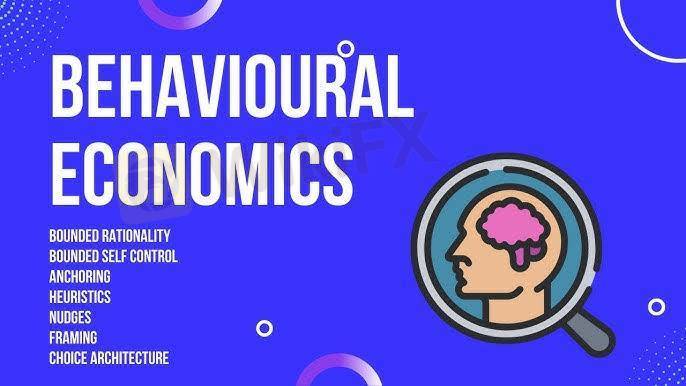
2025-02-12 16:35
업계에서Behavior economics: understanding consumer choices
#firstdealofthenewyearastylz
Behavioral Economics: Understanding Consumer Choices
Behavioral economics is the study of how psychological, emotional, and social factors influence consumer decision-making. Unlike traditional economics, which assumes people make rational choices based on perfect information, behavioral economics recognizes that consumers often make irrational decisions due to cognitive biases and heuristics (mental shortcuts).
Key Concepts in Behavioral Economics
1. Bounded Rationality – People have limited cognitive resources and time, leading them to make "good enough" rather than optimal decisions.
2. Loss Aversion – People fear losses more than they value equivalent gains (e.g., losing $100 feels worse than gaining $100 feels good).
3. Prospect Theory – Consumers evaluate potential gains and losses relative to a reference point rather than absolute outcomes.
4. Nudging – Small changes in how choices are presented can influence consumer behavior without restricting options (e.g., placing healthy foods at eye level in a store).
5. Anchoring Effect – People rely too much on the first piece of information they receive when making decisions (e.g., a high original price makes a discounted item seem like a better deal).
6. Social Proof – Consumers are influenced by what others are doing or buying (e.g., product reviews, testimonials).
7. Time Inconsistency – People tend to prefer immediate rewards over long-term benefits (e.g., choosing to eat junk food now despite wanting to be healthy later).
8. Default Bias – People tend to stick with pre-set options rather than actively making choices (e.g., automatic enrollment in retirement plans increases participation).
9. Framing Effect – How choices are presented affects decisions (e.g., "90% fat-free" sounds healthier than "10% fat").
Real-World Applications
Marketing & Advertising: Companies use behavioral insights to design persuasive ads, pricing strategies, and promotions.
Public Policy: Governments use nudges to encourage savings, healthier lifestyles, and environmental behaviors.
Retail & E-commerce: Online retailers leverage social proof, anchoring, and urgency tactics (e.g., "Only 2 left in stock!") to influence purchasing decisions.
Understanding behavioral economics helps businesses, policymakers, and consumers make better decisions by recognizing and counteracting biases.
좋아요 0
FX1618501564
Trader
인기있는 콘텐츠
시장 분석
투자주체별매매 동향
시장 분석
유로존 경제 쇠퇴 위기 직면
시장 분석
국제 유가는 어디로
시장 분석
미국증시 레버리지(Leverage)·인버스(Inverse)형의 ETF, 최근 사상 최대 신
시장 분석
투기장 된 원유 ETL...첫 투자위험 발령
시장 분석
RBNZ 양적완화 확대
포럼 카테고리

플랫폼

전시회

대리상

신병 모집

EA

업계에서

시장

인덱스
Behavior economics: understanding consumer choices
 홍콩 | 2025-02-12 16:35
홍콩 | 2025-02-12 16:35#firstdealofthenewyearastylz
Behavioral Economics: Understanding Consumer Choices
Behavioral economics is the study of how psychological, emotional, and social factors influence consumer decision-making. Unlike traditional economics, which assumes people make rational choices based on perfect information, behavioral economics recognizes that consumers often make irrational decisions due to cognitive biases and heuristics (mental shortcuts).
Key Concepts in Behavioral Economics
1. Bounded Rationality – People have limited cognitive resources and time, leading them to make "good enough" rather than optimal decisions.
2. Loss Aversion – People fear losses more than they value equivalent gains (e.g., losing $100 feels worse than gaining $100 feels good).
3. Prospect Theory – Consumers evaluate potential gains and losses relative to a reference point rather than absolute outcomes.
4. Nudging – Small changes in how choices are presented can influence consumer behavior without restricting options (e.g., placing healthy foods at eye level in a store).
5. Anchoring Effect – People rely too much on the first piece of information they receive when making decisions (e.g., a high original price makes a discounted item seem like a better deal).
6. Social Proof – Consumers are influenced by what others are doing or buying (e.g., product reviews, testimonials).
7. Time Inconsistency – People tend to prefer immediate rewards over long-term benefits (e.g., choosing to eat junk food now despite wanting to be healthy later).
8. Default Bias – People tend to stick with pre-set options rather than actively making choices (e.g., automatic enrollment in retirement plans increases participation).
9. Framing Effect – How choices are presented affects decisions (e.g., "90% fat-free" sounds healthier than "10% fat").
Real-World Applications
Marketing & Advertising: Companies use behavioral insights to design persuasive ads, pricing strategies, and promotions.
Public Policy: Governments use nudges to encourage savings, healthier lifestyles, and environmental behaviors.
Retail & E-commerce: Online retailers leverage social proof, anchoring, and urgency tactics (e.g., "Only 2 left in stock!") to influence purchasing decisions.
Understanding behavioral economics helps businesses, policymakers, and consumers make better decisions by recognizing and counteracting biases.
좋아요 0
나 도 댓 글 달 래.
제출
0코멘트

댓글이 아직 없습니다. 첫 번째를 만드십시오.

제출
댓글이 아직 없습니다. 첫 번째를 만드십시오.